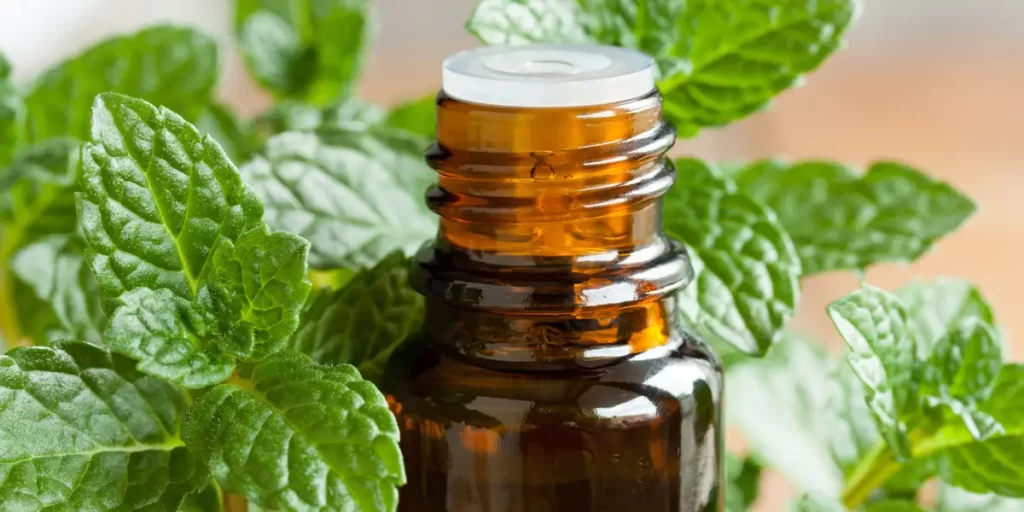Peppermint Oil is a very useful vegetable oil used by people in ancient societies as a source of healing. The mint plant is indispensable for our meals, both fresh and dry. Peppermint oil is also used as an essential oil in shampoos, toothpaste, candies, chewing gums, and many cosmetic products.
With the growing interest in the use of natural products, “What does peppermint oil do?” “What problems do peppermint oil solve?” “How to use peppermint oil?” We will try to answer your questions in this article.
Mint has a scent that reminds you of freshness, and it enhances the flavor of our meals with this beautiful scent. Concentrated peppermint oil is like a miracle for our health, beauty, and daily life.
After reading our article, you will include mint more in your life. You can consider growing it in a pot inside your home.
What are the Benefits of Peppermint Oil?
- It is beneficial for migraine pain. It is used to relieve headaches and neck pain. Known as menthol stone, the product contains intense mint essence.
- It is used as a natural pain reliever in muscle pain. Most pain relief gels and creams contain peppermint oil.
- It provides positive benefits for digestive system diseases such as indigestion, nausea, and diarrhea.
- Strengthens the immune system and fights diseases.
- Used to relieve flu and colds.
- It is used to facilitate breathing. Menthol has expectorant properties. It helps to end a cough with phlegm.
- It is very effective in inflammatory throat diseases and dry cough.
- It has an antipyretic effect with its cooling feature.
- It is effective in reducing intestinal parasites.
- It has the effect of increasing breast milk.
- It regulates gas formation in the intestines.
- It is beneficial if used immediately in mosquito and insect bites.
- It is beneficial for chest diseases, shortness of breath, and asthma.
- Helps to relieve hiccups.
- Peppermint oil can be found on the diet lists of those who want to lose weight, as it has a fat-burning feature and a feeling of satiety. On the contrary, mint is appetizing as an herb.

How to Use Peppermint Oil?
Peppermint oil is especially good for relieving pain. Pay attention to the use of mint, which is menthol. Peppermint oil is used in Western and Eastern cultures to help treat indigestion, nausea, diarrhea, colds, colds, and headaches.
In cases of migraine, headache, and neck pain; It is applied by massaging the forehead, neck, temples, and behind the ears.
Fever reduction with peppermint oil can be applied to the neck and under the feet for children. It will help reduce the fever with its cooling effect. You can mix it with coconut oil if you have it.
Those who complain of hiccups will notice that the hiccups will end in a short time if they count the vertebrae on their neck and apply a drop of peppermint oil to each side of the third vertebra towards the back.
It is used for smelling in cases of nasal congestion and colds.
Menthol, mint’s active ingredient, facilitates effective breathing. Since menthol thins mucus, it is also a good expectorant, which helps end a cough with phlegm. It is also soothing for inflamed throats (laryngitis and dry cough).
Peppermint oil can be used to drink, but this is not recommended. It can cause unexpected situations in your stomach.
What are the Negative Properties / Side Effects of Peppermint Oil?
Peppermint oil has no known side effects, but overuse should be avoided. Oral consumption of peppermint oil is not a recommended method. If you have a chronic illness or use medication, consult your doctor.
The use of peppermint oil in other areas:
- To prevent the arrival of unwanted guests such as cockroaches, mice, and ants, 2-3 drops of peppermint oil are placed on a cotton ball and placed at the entry points.
- To remove the new paint smell, 15 ml of hot water. Peppermint oil should be poured and left in the environment for a while.
- To kill aphids on plants, add 4-5 drops of peppermint oil to 1 cup (0.24 liters) of water and spray the leaves with a spray bottle.